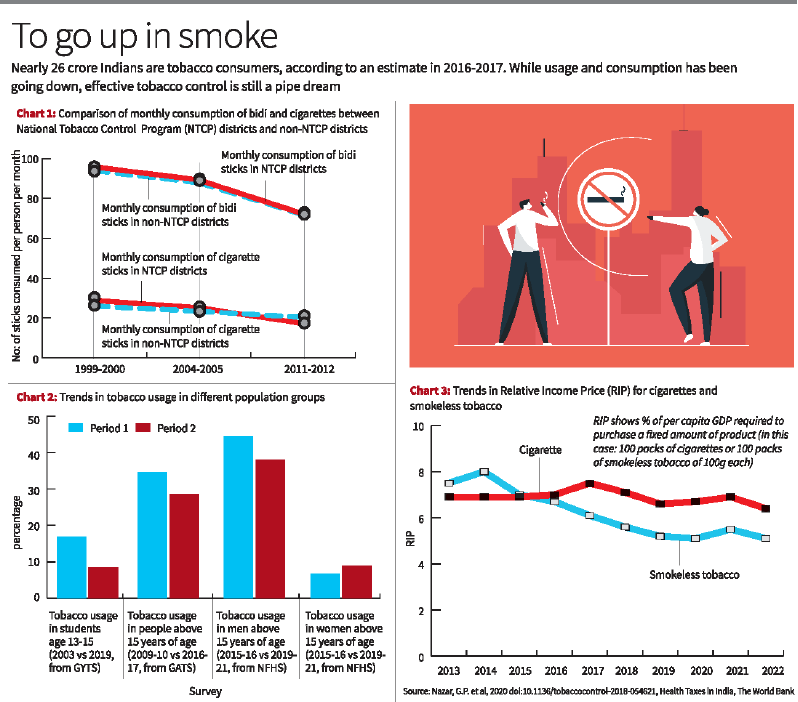Free Courses Sale ends Soon, Get It Now


Free Courses Sale ends Soon, Get It Now



Source: Hindu
Disclaimer: Copyright infringement not intended.
Context
Details
Tobacco Use in India
Prevalence and Demographics
Surveys and Data
Impact of COVID-19
Health and Environmental Impact
Health Consequences
Environmental Damage
Economic Burden
Regulation and Control
Legislation
National Tobacco Control Program (NTCP)
Advertising and Taxation
Control Measures and Effectiveness
Proposed Amendments
NTCP and Taxation
Tobacco Affordability
Lobbying and Industry Influence
Recommendations
About Tobacco
History of Tobacco Use
Global Production and Consumption
Primary Chemicals in Tobacco
Nicotine and Its Effects
Additives in Tobacco Products
Sources:
|
PRACTICE QUESTION Q. India's battle against the tobacco epidemic requires a multifaceted approach, combining stringent regulation, effective enforcement, economic measures, and support for affected populations. Comment. (250 Words) |
© 2024 iasgyan. All right reserved